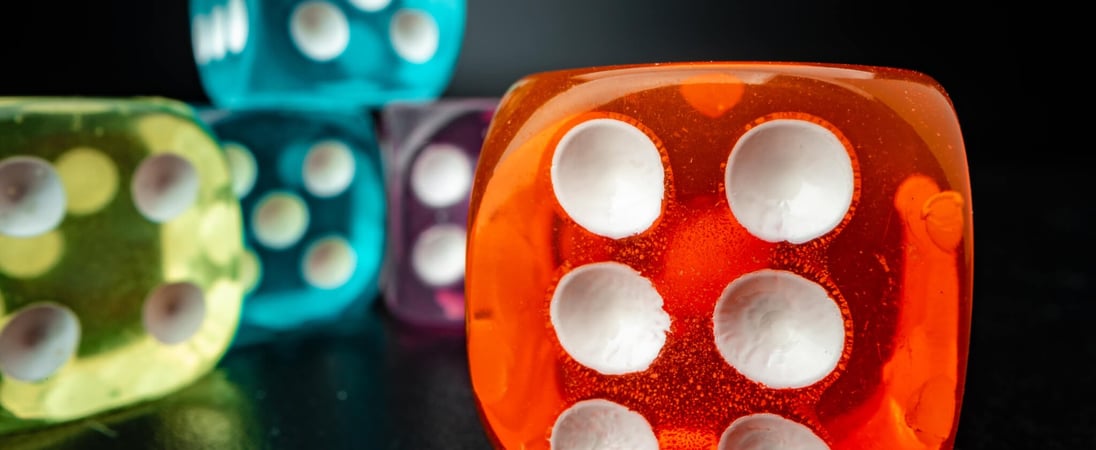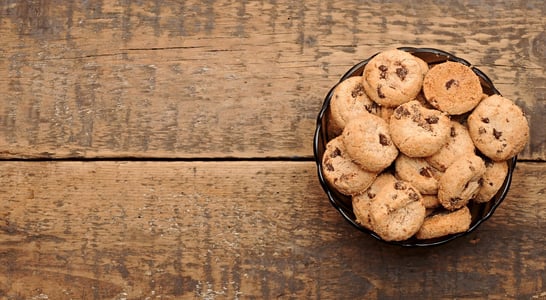
National Dice Day
Get ready to roll with endless possibilities! These small cubes hold the key to fun, excitement, and endless entertainment with friends and family!
Dice are popular throughout the world. Judging from the fact that Sanskrit epics mention them and that they’ve shown up on various archaeological sites, they’ve probably been around practically as long as civilization itself.
While many people may think of dice as only being a tool for gambling, they are also essential to board games such as backgammon and Monopoly.
In the Mahabharata, the character of Yudhisthira gambles away his kingdom, his brothers, and his wife. The epic Kurukshetra war that follows a simple game of dice makes up the rest of the narrative.
While it is difficult to pinpoint the date that Mahabharata was written, the most commonly held belief in India is that the events described in it happened about 5,000 years ago.
Now it’s time to learn more about Dice Day!
History of Dice Day
While dice can be found throughout the world, the oldest known set comes as a part of the Royal Game of Ur, which is the oldest existing board game that is dated at approximately 4,400 years old.
Ancient dice were not terribly different from modern forms and the concept of a six-faced cube with dots has been the world’s most popular pastime and gambling tool for centuries.
Tetrahedral dice and other shapes have also been around for quite some time as well. Materials such as ceramic, various metals, wood, and stone were all used to create dice of various shapes and sizes.
Brass dice have been around for a very long time in Tamil Nadu and soldiers during the American War of Independence used to hammer dice out of lead musket balls to keep themselves entertained.
Regardless of what shape they come in, the most popular medium for dice up until the 20th century seems to have been bone. These days, however, most dice are cast from plastic or synthetic resin. Particularly, the ones used in casinos are designed to ensure that they are truly random and not given to an unfair advantage.
How to Celebrate Dice Day
Get involved with celebrating Dice Day in a variety of fun ways, including ideas such as these:
Play Some Dice Day Games
It’s likely that almost anyone can probably think of at least one example of a game involving dice that they would like to play. Obviously, it is not necessary to make an exhaustive list of all of the possible options on that front. However, here are a few of the most popular games that people play with dice today:
- Bunco
Played with nine dice, a little bit of skill and a whole lot of luck, Bunco is typically played with large groups–twelve players who split up into teams of four. Points are awarded based on rolls and the winner takes all! - Yahtzee
This classic family game requires some luck and also just some paying attention. Scorecards are kept by each player using the poker philosophy of getting pairs, a full house and other combinations. Players use strategy to decide which items to score when. - Farkle
This dice game encourages players to take huge risks in order to win it all. Players roll all six dice and then set aside the “bankable” dice. They can then re-roll for more points or pass to the next player. If they choose to re-roll but nothing comes out of it, they must forfeit all of their points. - Left, Center, Right (LCR)
This game comes with custom made dice that are labelled with “L”, “R”, and “C”. It also uses chips that must be passed around from player to player, depending on the roll.
Bring Dice Day Games to Work
Sure, it’s maybe not conducive for playing over the cubicle walls at the office, but perhaps playing some Dice Day games in the lunch room during a break would be a fun way to kill some time. Plus, it’s a great way to get to know coworkers a little better and perhaps know who to invite to that next game night function.
Learn Some Dice Day Trivia
Share that knowledge of dice with friends, family and coworkers. They’ll be impressed as they hear these interesting tidbits of trivia on Dice Day:
-
The word “dice” seems to have been derived from a combination of Latin and Old French. The French word ‘dé’, and the Latin ‘datum’ seem to have been put together to mean “something which is given or played”. Over time, this evolved to “die”, the plural of which is “dice”.
-
The sum of the opposite sides of a six-sided die should always be 7: 6+1, 5+2 and 4+3.
-
A famous quote attributed to Julius Caesar says: “When dice are thrown, there is no turning back”.
Host a Dice Day Game Night
Invite over a few friends or gather up your family to play a dice game. Have plenty of dice ready and play one of the above-mentioned games or some others, such as Mexico, Qwixx, Tenzi Dice or others.
While it’s not ideal to encourage gambling, if that’s what it takes to get those friends to come to your Dice Day party, then it’s best to just assume that the event exists in a sort of legal grey area and not say anything.
However, it is still a good idea not to go to the extent of wagering on family members, spouse, or kingdom. For those who do so, it’s just bad policy.
National Dice Day FAQs
Did ancient dice always have six sides?
No, early dice often had irregular shapes and fewer than six sides. Four-sided dice, known as tetrahedrons, were common in Mesopotamia.
Other ancient dice were asymmetrical, leading to unpredictable rolls. The standard six-sided die (or cube) became more prevalent as civilizations developed better tools for shaping materials.
The uniformity of modern dice results from technological advances, ensuring fairness in games.
How did dice influence early religious rituals?
In ancient Greece and Rome, dice were central to divination rituals. Clerics and fortune-tellers rolled dice to interpret messages from gods, using special markings to convey meanings.
For example, during Roman times, a roll of specific numbers could indicate success in a military campaign or the favor of a deity.
What are some world records related to dice?
The largest dice tower ever built was stacked in Germany in 2013 and consisted of an incredible 2,433 dice.
Another fascinating record is the fastest time to stack 20 dice using one hand, achieved in just 17.69 seconds by Silvio Sabba from Italy.
There’s even a record for the largest functioning die, which was over six feet tall and made entirely of foam for a public event in the UK.
Are there any rare or unique dice in museums?
Yes, many museums display rare dice with rich histories. The Metropolitan Museum of Art in New York has a set of Roman bone dice from the 1st century CE.
These dice are remarkably similar in design to modern ones, showing how little the concept has changed.
The British Museum holds Egyptian dice carved from ivory, dating back thousands of years. These artifacts reveal that dice weren’t just used for games but also as status symbols among the wealthy.
Why are some dice transparent?
Transparent dice are a staple in casinos because they prevent cheating. Manufacturing defects or weights inside opaque dice could give players an unfair advantage, but clear dice expose any irregularities.
Casino dice are also made with sharp, unrounded edges to ensure a truly random roll.
Their transparency also makes them visually striking, adding to the thrill of high-stakes games like craps.
What unusual materials have been used to make dice?
Dice have been crafted from fascinating materials throughout history. In ancient times, bones and teeth of animals were common, symbolizing a connection to nature or spiritual forces.
Viking dice were often carved from antlers. Some dice made from meteorites have been found, believed to bring luck due to their celestial origin.
In Tibet, dice made of human bones were sometimes used during rituals to connect with the spiritual realm.
Are dice games tied to specific holidays or festivals?
Yes, dice games are integral to celebrations in various cultures. In the Philippines, families play dice games like “Pachisi” during Christmas, combining strategy and chance in a festive spirit.
In Germany, “Kniffel,” a game similar to Yahtzee, is a favorite during holidays when families gather.
In Japan, the dice game “Sugoroku” has been a part of New Year celebrations for centuries, symbolizing fresh starts and good fortune.
How did the invention of plastic change dice production?
The introduction of plastic revolutionized dice production in the 20th century.
Before this, dice were primarily made from wood, ivory, or bone, which were expensive and required skilled craftsmanship.
Plastic made dice more affordable and accessible, allowing mass production in countless colors, shapes, and designs.
This innovation also made dice more durable and uniform, ensuring fair rolls and enabling their use in modern board games and role-playing games.
Are dice part of any traditional folk tales?
Yes, dice have a rich presence in folklore. In a German folktale, a clever man challenges the devil to a dice game, betting his soul.
Unbeknownst to the devil, the man uses loaded dice to win. In Indian mythology, the epic Mahabharata centers around a high-stakes dice game where the Pandavas lose their kingdom.
These tales highlight the dual nature of dice as tools of luck and deception.
How do professional gamers test the fairness of dice?
Professional gamers often float dice in water to test for balance. Uneven dice will tilt toward their heavier sides, revealing imperfections.
Some gamers also use precision measuring tools to check for inconsistencies in size or weight.
Casino dice undergo rigorous testing to meet strict standards, ensuring randomness and fairness during play. These techniques help maintain trust in games where dice are a critical element.
See what else is happening…
There’s always more going on every month at Days Of The Year. Here are our favorites this month!
Also on ...
View all holidaysNational Cookie Day
Bake some sugary, buttery and perfectly rounded snacks, indulge in classics like chocolate chip or experiment with unusual flavors like lavender or cheese.
National Sock Day
These little pieces of fabric we wear on our feet are an important part of being cool and comfortable all day long.
World Wildlife Conservation Day
Dedicated efforts to protect our planet's incredible creatures and their habitats, ensuring future generations get to share in the wonder of nature.
Cabernet Franc Day
Savoring a glass of this wine variety unveils a world of rich flavors and unique characteristics, making each sip a delightful journey.
We think you may also like...
National Paper Airplane Day
Grab a piece of paper, fold it up, and let fly. Challenge your friends and family to a contest, and see who can make the fastest or farthest-flying plane.
Revenge of the Fifth
Cheering for the dark side, and finding fascination in characters who embrace their complexity and challenge traditional notions of good and evil.
Teddy Day
Huggable, soft companions that bring comfort and warmth to people of all ages, embodying timeless affection and solace.
National Mr. Potato Head Day
Celebrating the charm of a versatile, spud-based toy, sparking creativity and timeless joy through imaginative play and customization.








